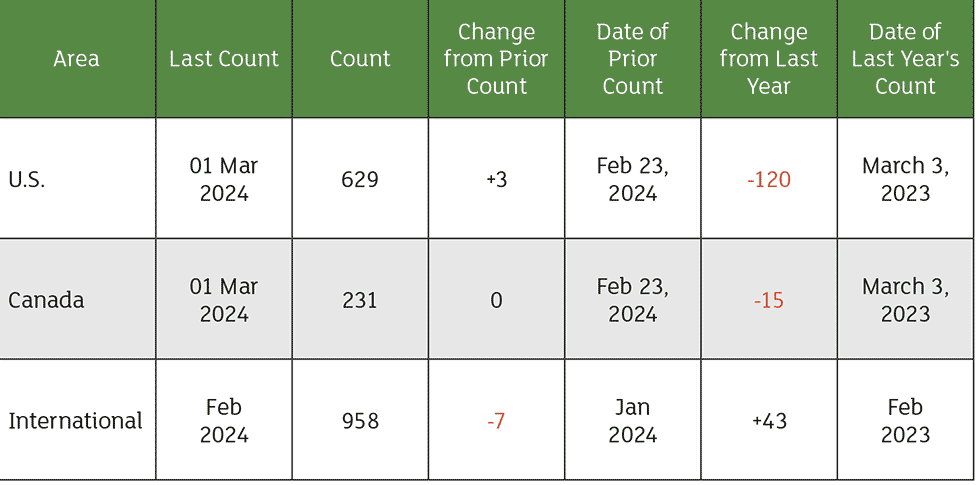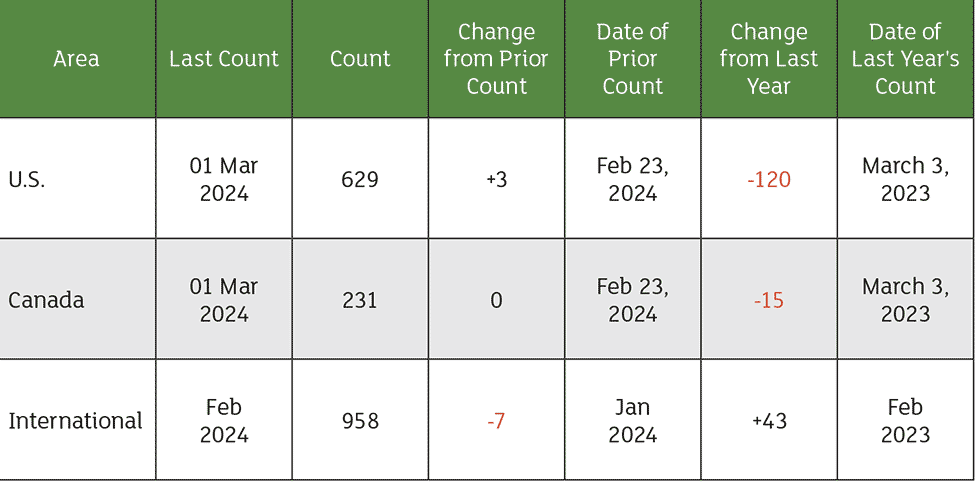
According to the U.S. Bureau of Labor Statistics, the Consumer Price Index for All Urban Consumers (CPI-U) rose by 0.3% in January on a seasonally adjusted basis, following a 0.2% increase in December. Over the past year, the All Items Index increased by 3.1% before seasonal adjustment. In January, the Energy Index experienced a 0.9% decline during the month, primarily attributed to the decrease in the gasoline index.
The Bureau of Labor Statistics reported a rise in total nonfarm payroll employment by 353,000 in January, with the unemployment rate holding steady at 3.7%. Job gains were observed in various sectors, including professional and business services, health care, retail trade and social assistance. However, the mining, quarrying and oil and gas extraction industry experienced a decline in employment.

Several nations in the Organization of the Petroleum Exporting Countries (OPEC+) have announced an extension of additional voluntary cuts totaling 2.2 million barrels per day (b/d) for the second quarter of 2024. These measures are aimed at bolstering the stability and equilibrium of global oil markets. The decision to prolong these cuts stems from the 35th OPEC Ministerial Meeting held on June 4, 2023, and supplements the voluntary reductions previously enacted in April 2023, extended until the close of 2024. Notable contributors to this initiative include Saudi Arabia, Iraq, United Arab Emirates, Kuwait, Kazakhstan, Algeria and Oman, with reductions ranging from 42 thousand b/d to 1,000 thousand b/d. These adjustments are intended to be gradually reversed, contingent upon market conditions, to uphold market stability. In addition, Russia has pledged a voluntary cut of 471 thousand b/d for the second quarter of 2024, allocated between crude oil production and exports across April, May and June. This commitment builds upon a prior cut of 500 thousand b/d announced in April 2023.
In 2023, the United States reinforced its position as the primary supplier of liquefied natural gas (LNG) to Europe, accounting for almost half of the region’s total LNG imports. This data, sourced from CEDIGAZ, marks the third consecutive year the U.S. has outpaced all other countries in supplying LNG to Europe. The trend has been unmistakably upward: in 2021, the U.S. supplied 27% of European LNG imports, amounting to 2.4 billion cubic feet per day (Bcf/d). By 2023, this figure had surged to 48%, equivalent to 7.1 Bcf/d. This growth trajectory underscores the increasing significance of American LNG exports in meeting Europe’s energy needs.
On Wall Street, economists are predicting the possibility of interest rate cuts by the Federal Reserve, with Apollo Global Management’s Chief Economist Torsten Slok warning that the Federal Reserve will not cut rates in 2024. “The reality is that the U.S. economy is simply not slowing down, and the Fed pivot has provided a strong tailwind to growth since December,” Slok wrote to clients on March 1.
The S&P 500 SPX gained 6.8% in January and February, while the Dow Jones Industrial Average experienced a 2.2% February gain and a 3.5% year-to-date rise, marking the strongest beginning for both indexes since 2019.

